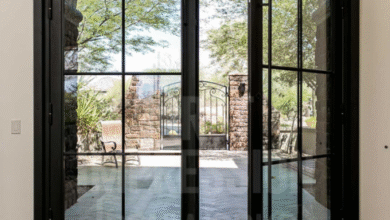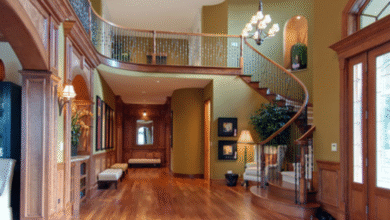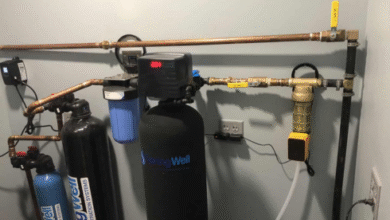Design That Works: Why Office Interiors Deserve More Than a Coat of Paint

Let’s be honest—most office spaces feel like they were designed as an afterthought. Rows of desks, some cold lighting, maybe a pop of wall art if someone felt creative. Functional? Sure. Inspiring? Not exactly. But in a world where work and well-being are more connected than ever, the places we work need to do more than just house desks and conference calls.
They need to support energy, spark collaboration, and actually feel… good.
That’s where thoughtful office interior design steps in. And in places like Minneapolis—where creative industries, tech startups, and legacy firms all share the cityscape—it’s no longer just a nice-to-have. It’s part of the culture.
Offices Are More Than Just Where Work Gets Done
Think about it. You walk into a well-designed restaurant and instantly feel the vibe. You get comfortable, you settle in, you stay. But offices? For decades, they’ve been stuck in this gray-zone limbo between function and indifference.
And then something shifted. We realized space affects mood. Layout influences communication. Lighting impacts focus. Suddenly, office design became less about what filled the room—and more about how the room made people feel.
It’s not just about giving people chairs and monitors. It’s about giving them a setting that supports their creativity, their comfort, their flow. A smart office interior designer knows this.
What “Designing for Work” Really Means
You don’t have to be a Fortune 500 company to invest in a better workspace. In fact, smaller businesses often benefit even more from great design because every inch matters. Fewer square feet means each decision carries weight—every layout tweak, color choice, and furniture selection impacts how your team moves and interacts.
A well-thought-out interior considers:
- Lighting that energizes instead of fatigues.
- Furniture that supports posture without sacrificing style.
- Acoustics that allow both focused work and team conversation.
- Zones for collaboration, quiet time, breaks, and impromptu chats.
None of this happens by accident. It happens with intention—and often, with the help of a pro who lives and breathes workspaces.
The Minneapolis Factor
There’s something about Minneapolis—its blend of Midwestern grit and creative edge—that makes it a prime spot for bold, smart design. Offices here aren’t trying to outshine New York or mimic the West Coast. They’re carving out their own style: warm, welcoming, efficient.
Whether it’s a converted warehouse in the North Loop, a modern glass box downtown, or a co-working space tucked into an old building near St. Paul, the vibe is consistent—purposeful, authentic, and human.
That’s what makes office interior design Minneapolis such an exciting field. Designers here understand the climate (both seasonal and cultural), and they know how to create spaces that feel rooted and relevant.
They know that during the long winter months, people need warmth—not just from the heater, but from textures, tones, and atmosphere. They know how to work with natural light, exposed brick, tall ceilings, and tight corners.
And they know how to bring life into what could otherwise feel like just another Monday.
Function, But Make It Beautiful
One of the myths that stops businesses from investing in design is the idea that beauty and function are somehow at odds. As if having a good-looking office automatically means sacrificing practicality.
Let’s kill that myth right now.
Great design is both. It’s the way a couch in a breakout area invites conversation. The way a simple plant wall boosts morale. The way muted tones and soft materials reduce stress.
A good interior designer office approach considers all of this. It’s not about flash. It’s about flow. The feeling of “this space works for us” when you walk in and see it all come together.
Not Every Office Has to Look the Same
There’s no one-size-fits-all blueprint. Some teams thrive in open-plan layouts. Others need quiet nooks and privacy. Some crave color and movement. Others want simplicity and calm.
The best designers ask before they draw. They observe. They interview. They walk the space and ask weirdly specific questions like “Do your employees tend to snack at their desks or eat in a break room?” Because those answers? They shape everything.
The result isn’t just a beautiful office. It’s a useful one. A space that serves the people in it, instead of just housing them.
Design as a Business Decision
If you’re still wondering whether now’s the time to upgrade your office, here’s a question worth asking: how much does your space reflect your values?
If your culture is creative, does your space say that? If you pride yourself on collaboration, does your layout support it? If you want to attract top talent, does your workplace feel worth showing off?
Design isn’t fluff. It’s branding. It’s functionality. It’s retention. It’s clarity.
And if you’re in Minneapolis, searching for help to make it happen, you don’t have to look far. This city is full of talented, practical designers who know how to bridge style with business sense.
In fact, you might just stumble on your ideal interior designer office, office interior designer, office interior design Minneapolis connection while scrolling between meetings.
Final Thoughts: Make Room for What You Value
Your office is a reflection of what matters to you. Whether it’s collaboration, creativity, efficiency, or calm, your space should reflect that intention.
You don’t need a massive overhaul. You don’t need to break the bank. You just need a design that fits your team, your work, and your values.
Because at the end of the day, good design doesn’t just look good—it works hard behind the scenes to make everything else better.
And really, isn’t that what a great office is all about?




